High-Risk Merchant FAQ
October 29, 2023
The Mastercard MATCH List Criteria
December 18, 2023Excessive Chargebacks and the MATCH List
Did you just find out you were placed on the MATCH List due to excessive chargebacks? Chargebacks are usually inevitable—it is almost impossible to find a business that has never had one. Customers can open one for any number of reasons or no real reason at all, which is why a small percentage of chargebacks is usually a non-issue for banks or credit card processors. However, if your business has excessive chargebacks, you will start running into some issues, including being added to the MATCH List. If this sounds like you, you have options. Keep reading to learn more about excessive chargebacks and the MATCH List, and how you can seek early removal to save your business.
Understanding Chargebacks
Chargebacks can seem complicated for many people because they are often confused with refunds. However, a chargeback is not a refund. Refunds are issued when a product is returned, or service wasn’t, for some reason, correct. A chargeback is when funds are returned due to a charge that the customer believes should be disputed.
What is a Chargeback?
A chargeback is a charge that is returned to a payment card after a customer successfully disputes an item on their account statement or transactions report. A chargeback may occur on debit cards (and the underlying bank account) or on credit cards. Chargebacks can be granted to a cardholder for a variety of reasons.
In the U.S., chargeback reversals for debit cards are governed by Regulation E of the Electronic Fund Transfer Act. Chargeback reversal for credit cards is governed by Regulation Z of the Truth in Lending Act.
Why Do People Open Chargebacks?
There are many reasons why people choose to call their bank or credit card processor and open a chargeback. These reasons include:
- A customer never received the items that they purchased, and it has been well over a reasonable amount of time for it to have been shipped
- They purchased a service and the service never happened
- The merchant made an error, such as charging the customer twice or charging the customer the wrong amount
- There was a technical issue with the merchant’s technology, and cards were mistakenly charged
- The customer was a victim of fraud, their card information has been stolen, or their credit cards were otherwise used without their knowledge or consent
How Do Customers Open a Chargeback?
According to Visa, you usually have up to 120 days after the purchase to make a chargeback claim, but you should not start a claim unless you have tried to get a refund directly from the seller. If you’re not satisfied with the seller’s response, make a chargeback claim as soon as possible, particularly if you suspect that the retailer has gone out of business or is likely to. If they do, your claim will still be addressed, although there’s no guarantee you’ll get a refund.
There is no set limit for a chargeback, but the amount you claim cannot be more than the value of the purchase. In other words, you can’t claim interest or penalties through chargeback. If the seller has already refunded some of your money, you can only make a chargeback claim for the outstanding amount.
Why Chargebacks Place You on the MATCH List
The most common reason businesses land on the MATCH List is excessive chargebacks. As mentioned, chargebacks can often be a regular part of running a business. However, once they become excessive, your bank or credit card processor can decide to add you to the MATCH List. Keeping customers happy and protected should always be the most important thing, and excessive chargebacks are a red flag to processors that your business is high-risk or not operating smoothly enough to warrant a merchant account at this time.
How to Avoid Excessive Chargebacks
There are many ways you can avoid excessive chargebacks to ensure you do not land on the MATCH List again. These include:
- Set up chargeback alerts. Make sure you know when a chargeback is happening so that you have the chance to turn it around before it becomes a chargeback that is counted against you. Take the opportunity to refund the customer.
- Provide great customer service. One of the main reasons people dispute transactions they willingly pay for is poor customer service. If your product or service is running late or off schedule, keep your customers updated and, most of the time, they will be happy. If a customer reaches out to you with a question about their order, especially about timing, keep that as a top priority.
- Be honest with your offerings. Do not advertise products, services, or shipping times that you cannot provide or meet.
What to Do If You Get a Chargeback
If a chargeback has been opened against you, there are things you can do to fight it or have it removed. This includes:
- Talk to the customer and offer a refund. Before the chargeback has the opportunity to get any further, try to settle it with the customer one-on-one by offering a refund to close out the case.
- Write a rebuttal. As a business, you have the opportunity to write a rebuttal letter to fight the chargeback, in a process called representment.
- Gather as much evidence as possible. Keeping detailed records of all your orders and gathering as much evidence as possible in your representment case is key in order to fight against chargebacks that you do not think should be happening.
If Chargebacks Placed You on the MATCH List
Mastercard Alert To Control High-risk Merchants (MATCH) lets an acquiring partner look up whether another acquiring partner has terminated a merchant in the past and the reason for said termination to help with an onboarding decision.
Users have the power to:
- Add merchants who have been terminated for specific reasons to MATCH
- Dynamic merchant search: Designate regions/countries and use multiple fields to determine possible matches
- Principal owner search: Add and search for information about up to five principal owners per merchant inquiry and addition
- Terminated merchant inquiry: Inquire about a merchant to find out if they have been previously added to MATCH
- Retroactive alerts: Receive retroactive alerts if a merchant you previously inquired about is added to MATCH within 360 days of the initial inquiry
If this happens to you, you will lose your merchant account and be stuck on this list for a period of five years. After five years, you will “age out” of the MATCH List, and can go back to conducting business as usual with your merchant account. However, most businesses do not survive this waiting period.
How to Get Off MATCH List
Luckily, there are ways you can get off the MATCH List if you have been placed on it due to excessive chargebacks. This includes:
- Talk to your processor. Give your bank a call and find out why they added you to the MATCH List. If you believe that your chargeback rate is below “excessive”, which is under 1%, then make sure you come prepared with documentation to support this.
- Get professional, legal help. You do not have to wait the full five-year period. Early removal from the MATCH List is possible.
Early MATCH List Removal with TFM Law
If you have found yourself on the Match List, we can help you. The Law Offices of Theodore Monroe focuses on litigation and counseling in payments, credit card processing, e-commerce, direct response marketing, and Federal Trade Commission enforcement. Last year, the firm got 100% of the people who came to us off the MATCH list.
Theodore F. Monroe, Founder of TFM Law, has successfully:
Represented merchants recovering funds from processors
Structured processing relationships to comply with Card Brand requirements
Drafted and negotiated contracts involving payment facilitators and ISOs
Represented continuity merchants in compliance and litigation issues
Fought for numerous companies in suits brought by the Federal Trade Commission and obtained excellent results for firms in the digital products, loan modification, government grant, and nutraceuticals industries
Before opening his firm, Mr. Monroe practiced law with Crosby, Heafey, Roach & May (now Reed Smith LLP) and Lewis, D’Amato, Brisbois & Bisgaard (now Lewis, Brisbois, Bisgaard & Smith), where he defended numerous accounting and law firms in professional liability actions, and insurance carriers in bad faith actions.
Before becoming a lawyer, Mr. Monroe worked as a forensic accountant at Coopers & Lybrand, which provided him a background in forensic accounting and financial analysis that is unique among litigators in Los Angeles. Mr. Monroe studied at Duke University Law School, achieved a BS with Honors, Accounting, University of Kentucky, and is a member of the California State Bar and the Kentucky State Bar.




